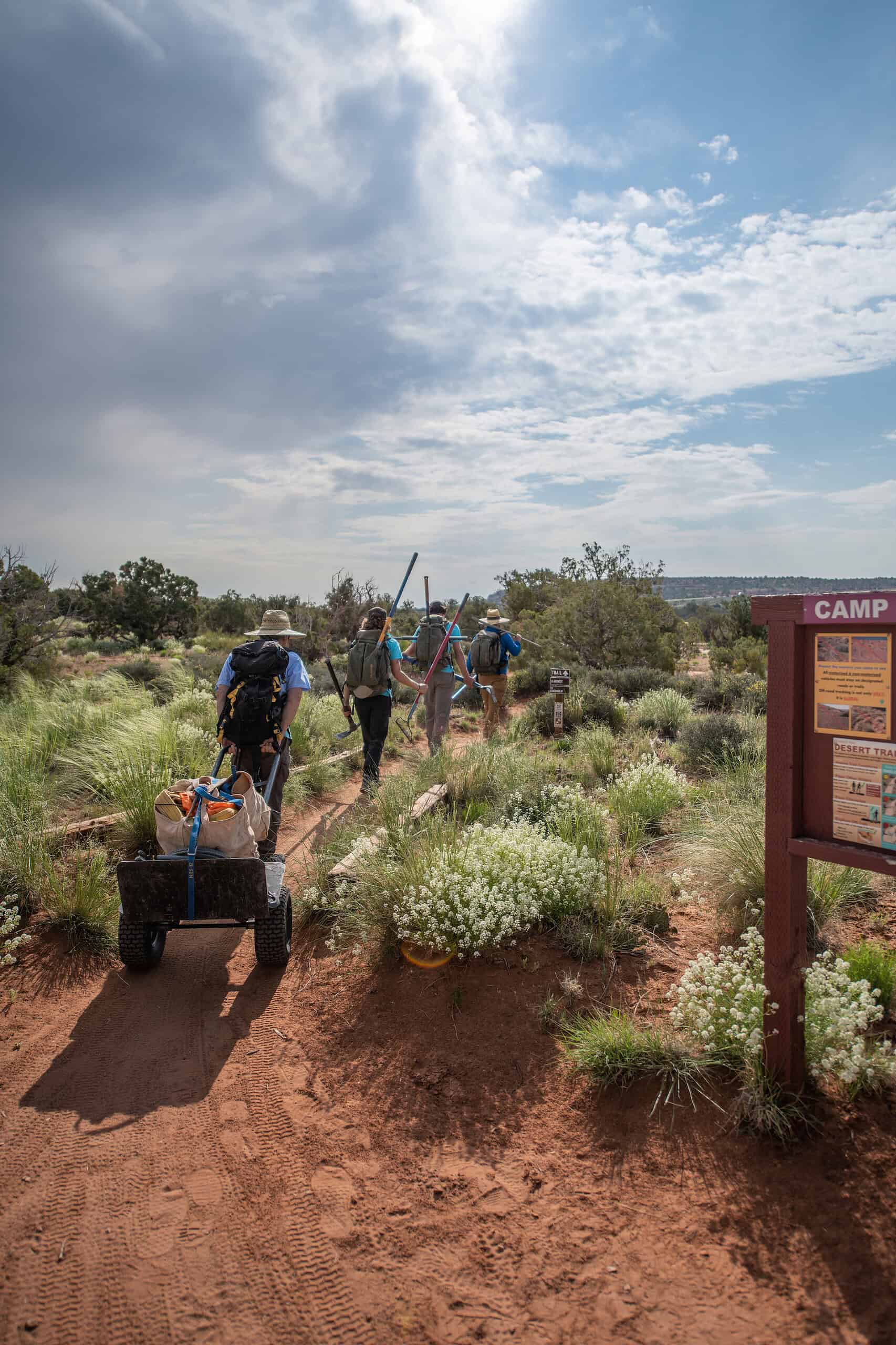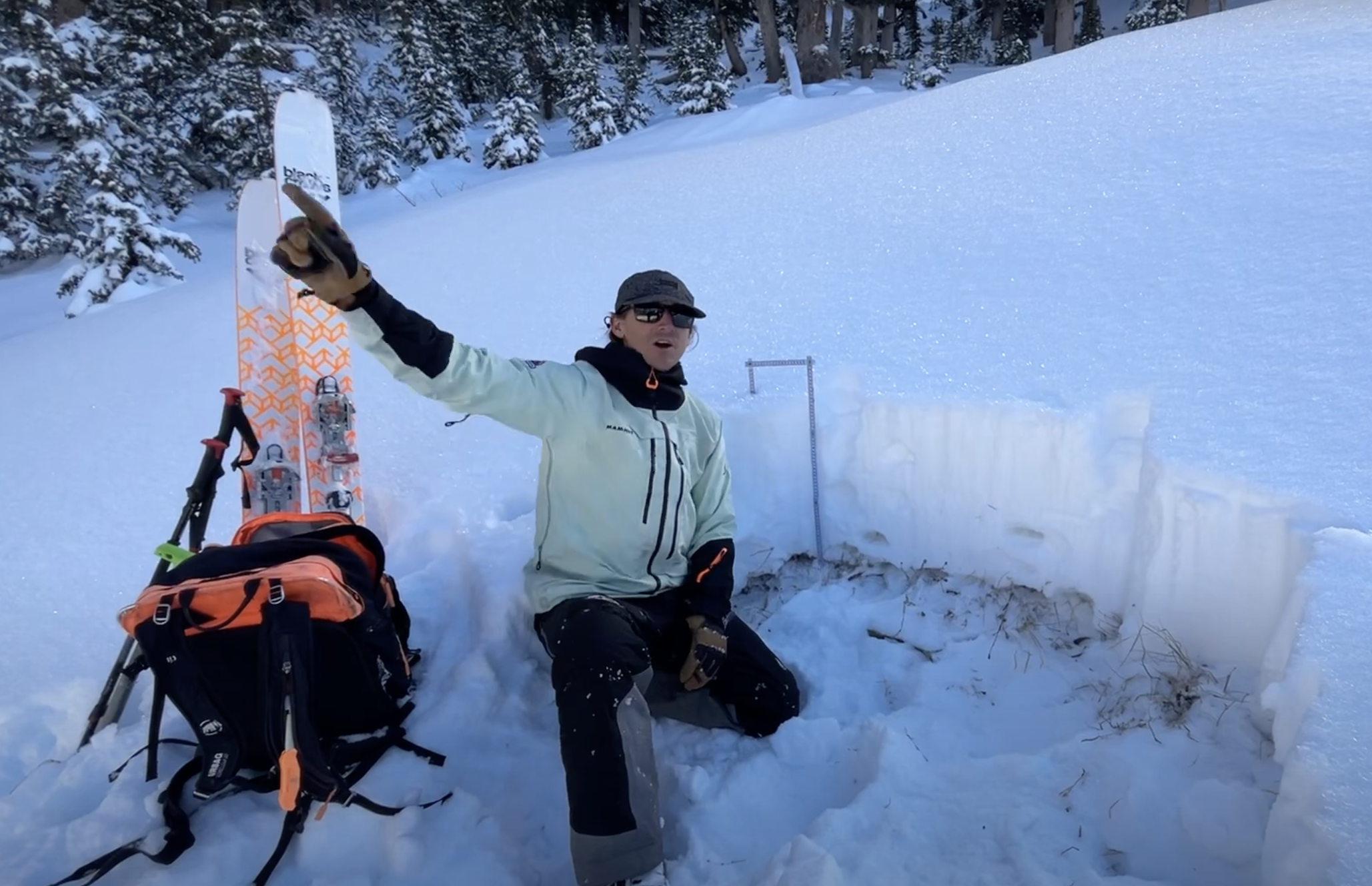Some information may be outdated.
In a fragile place, unbridled enthusiasm may lead to destruction, playing out the age-old adage of “loved to death.” September 23, locals marked Public Lands Day, a day to shine a light on the lands we all love and engage in a day of service to remedy the effects of this blossoming love affair with the land.
All around Moab, folks could be caught in the act of service, helping to protect and restore these beloved places—and stewardship events will continue throughout the fall.
Public Lands Day started in 1994 on the banks of Cache Creek in California and the red rocks outside of Las Vegas, with 700 volunteers making an investment in the lands along these public sites. Originally “Public Lands Appreciation Day,” it’s grown to service public areas across the country, amassing $133,000,000 in terms of the value of volunteer hours, according to the National Environmental Education Foundation (NEEF). It’s now the largest single day volunteer event in the country.
71% of Utah’s land is “public,” meaning owned by federal or state agencies, and recreationists in the Moab area benefit from these managed lands.
On top of Sand Flats, volunteers helped build the new Kestrel Run mountain bike trail. Ryan Lowe brought his family out to volunteer with Moab Trail Mix and the BLM. As an avid weekly user of these trails, he was excited to see new trails being built.
“We’re so lucky to have so many amazing trails so close to home,” Lowe said.
Lowe’s daughter, Piper, 8, said she enjoys having fun on the trails while being able to keep the animals that call the land home safe. There are more trail-building events coming up: volunteers can help build the Kestrel Run on Monday, October 2, and the Dino Flow Trail on Saturday, October 7.
After a day of hard work, climbers gathered at Star Hall on Saturday evening to chat about the impacts of increasing tourism and Leave No Trace practices for the Moab Rocks Movie night. The event gathered climbers in one place to learn about the impacts of climbing on the local ecosystem, and was put on with the support of a grant from the Access Fund—there will be another event on Saturday, October 14.
Deputy State Director of Communications at the Bureau of Land Management Jennifer Jones describes this expanse of 1.8 million acres in the charge of the Moab Field Office as “choose your own adventure,” with multiple user groups recreating on these lands.
She, along with Maddie Logowitz with Grand County Active Transportation and Trails and Rachel Nelson with Friends of Indian Creek, took the stage to discuss the power of partnerships in protecting public land.
Nelson created Friends of Indian Creek to be an intermediary between climbers and land managers.
Logowitz started a local climbing ambassador program in 2021 as a response to increased impact. She cited research that shows talking one-on-one to people is a proven way to change behavior. The main focus of the message in those intimate conversations is on safety, environmental impacts, and ethics. She encouraged climbers to check for closures, and to think about their impact in areas, even if it’s small. She suggested carpooling to the crag, and knowing where there are archaeological sites if a climber considers new route development.
As “eyes on the ground,” Jones and Logowitz encourage recreators to report concerns. Climbers heading out during nesting season can find information on the Friends of Indian Creek Facebook page.
While there are many individual organizations that work together to achieve best stewardship practices, Jones emphasized that each person is a partner in this effort to preserve our public lands, as we work together to create solutions for a common goal.
BLM biologist Yoni Argov offered more context on how to keep animals safe while recreating. He gave a presentation on the best principles of Leave No Trace as they relate to the wildlife that call public lands home.
Argov reminded volunteers that recreators are visitors to animals’ habitats; the landscape is home to a variety of wildlife, from the prairie falcon to the bighorn sheep. Local research by wildlife conservation scientist Joel Berger showed that bighorn sheep can be easily spooked by hikers—he found that a pregnant sheep had run four miles away from a hiker over rugged terrain. Arches National Park is projected to see 3.6 million visitors per year in 2030, Argov said.
For more information on future events and to sign up to volunteer, visit Moab Trail Mix on social media or www.moabtrailmix.com. The climbing ambassadors will hold another movie night on October 14.
To help build the Kestrel Trail, meet Monday 10/2/23. 4-7pm at Camp H in the Sand Flats Recreation Area.
Keep in mind that another perk of Public Lands Day is free entrance to a National Park. Public Lands day is the fourth Saturday in September every year. You can also find the Climbing Ambassadors at Lion’s Park every Saturday from 9-12 for a free cup of coffee and an educational conversation or chat!
Appreciate the coverage? Help keep local news alive.
Chip in to support the Moab Sun News.





